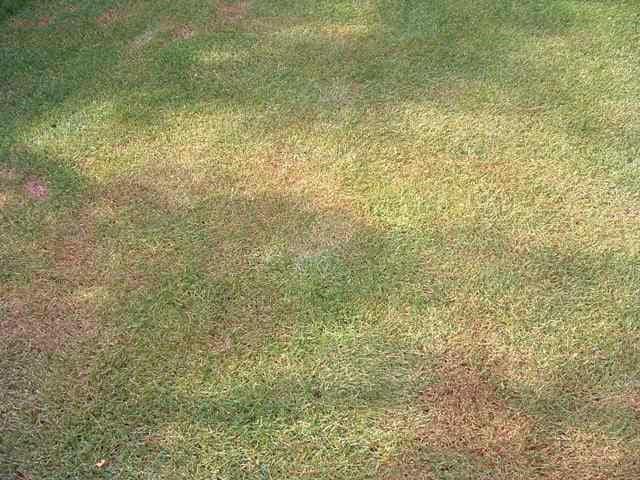Home / Information & advice / Turf & Lawns / Lawn diseases / Brown patches in turf
Foliar pathogens are found in all parts of the UK, and live in grass swards year round. Only when the weather is cool and wet are they capable of attacking the living grass leaves and killing them. The reason is that the fungi that cause these leaf blights must have long periods of time when the grass leaves are wet. There are many different fungi that can cause a foliar blight, but they all have similar requirements for their development. While a turfgrass pathologist can identify the particular fungus that is attacking grass, it is not necessary for the purpose of control. I
t may be of interest to know that some of the foliar blights have specific names, like Fusarium blight, dollar spot, Septoria spot, Curvularia blight, Drechslera blight, Helminthosporium blight and melting out. For the purpose of managing these diseases in fine turf, it is not necessary to determine exactly which leaf blight is causing brown patches in your turf.
If these conditions apply, then you might have a foliar fungus in your turf.

All turfgrasses grown in the UK are attacked by foliar fungi, but some are more resistant than others. To learn which grasses are the most resistant, consult a professional agronomist or The Sports Turf Research Institute.
The best approach to preventing the development of brown patches in turf is proper turf care. In summary, the following suggestions should get you started:
Yes, fungicides can be used to control the foliar diseases that cause brown patches. Fungicides are toxins, and should only be used when necessary. Make sure that the brown patches in your turf are indeed caused by a disease. It is recommended that you seek qualified professional advice before using fungicides.
We also recommend that you obtain advice about chemical and non chemical products directly from the manufacturers.
Brown patches in turf can be caused by problems other than disease. Make sure that your brown patches are, in fact, diseases before you try to control them.
Further lawn care advice can be found in our Information Centre. You can also sign up for lawn tips to receive regular lawn care advice, news and promotional offers by email which will help you get the best from your lawn.
For more techniques to help you maintain a healthy lawn, explore our other lawn aftercare advice.
You can also sign up to our newsletter to receive free seasonal lawn care advice and reminders of essential maintenance, as well as general horticultural advice and special offers from Rolawn.